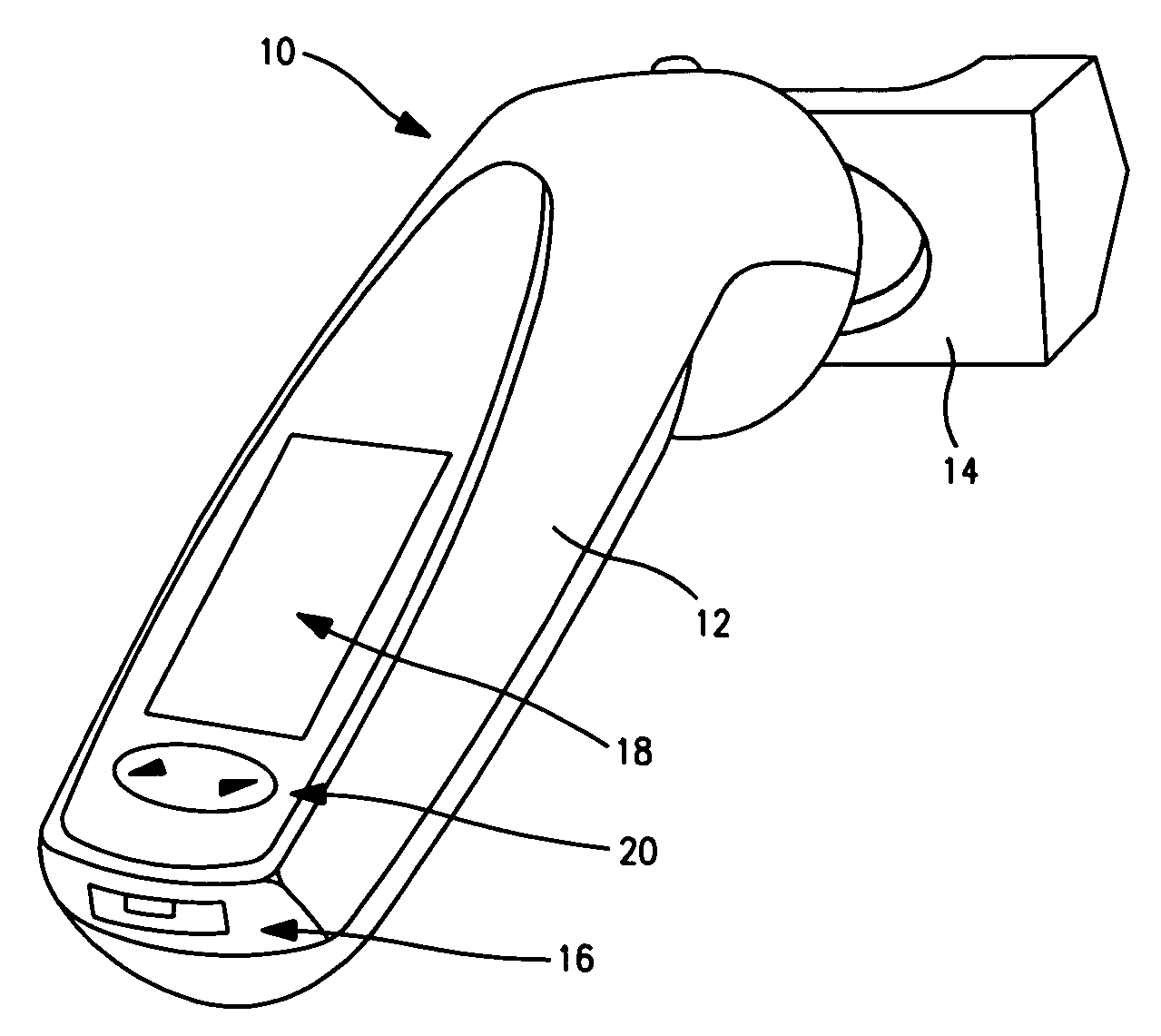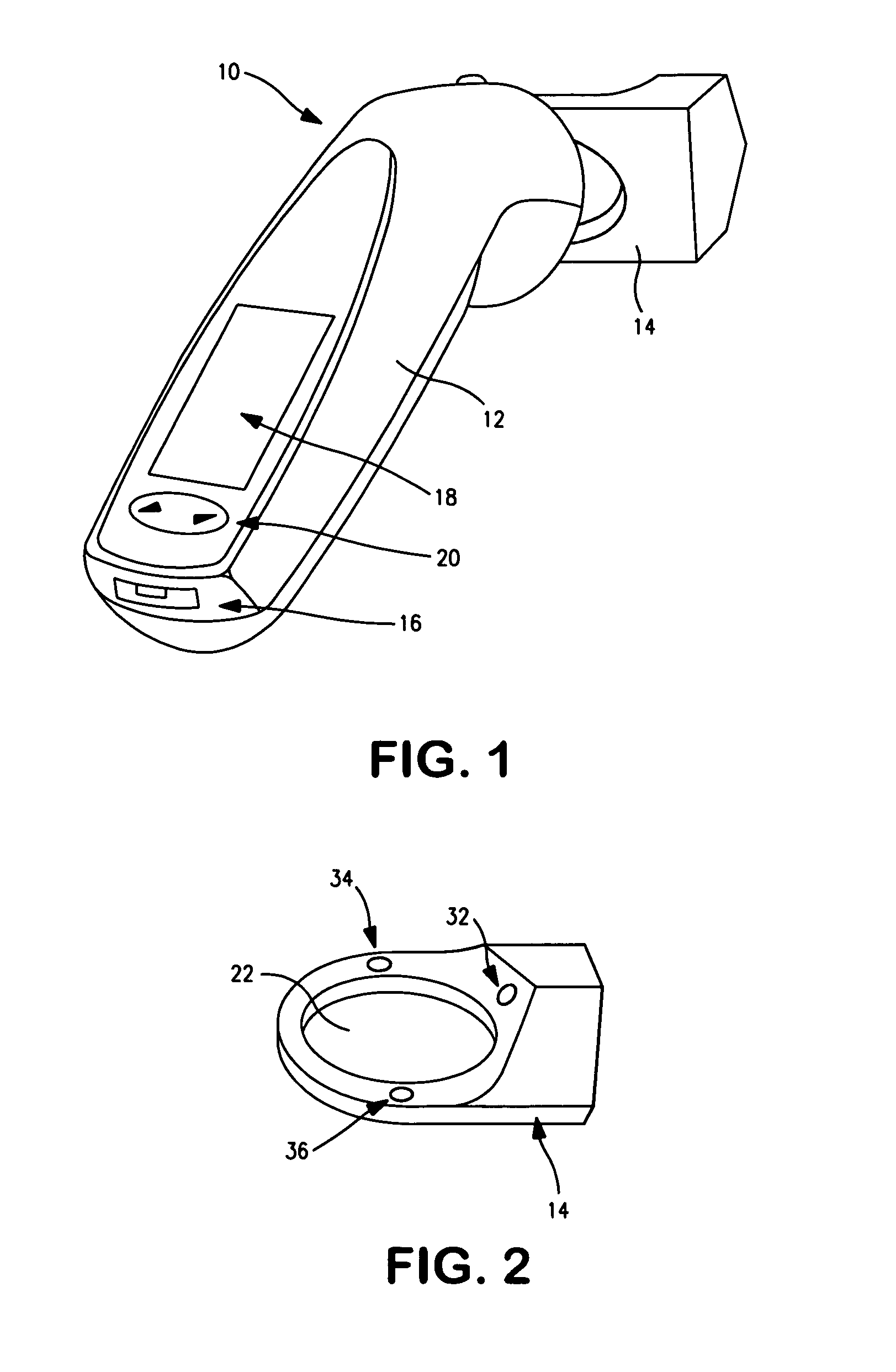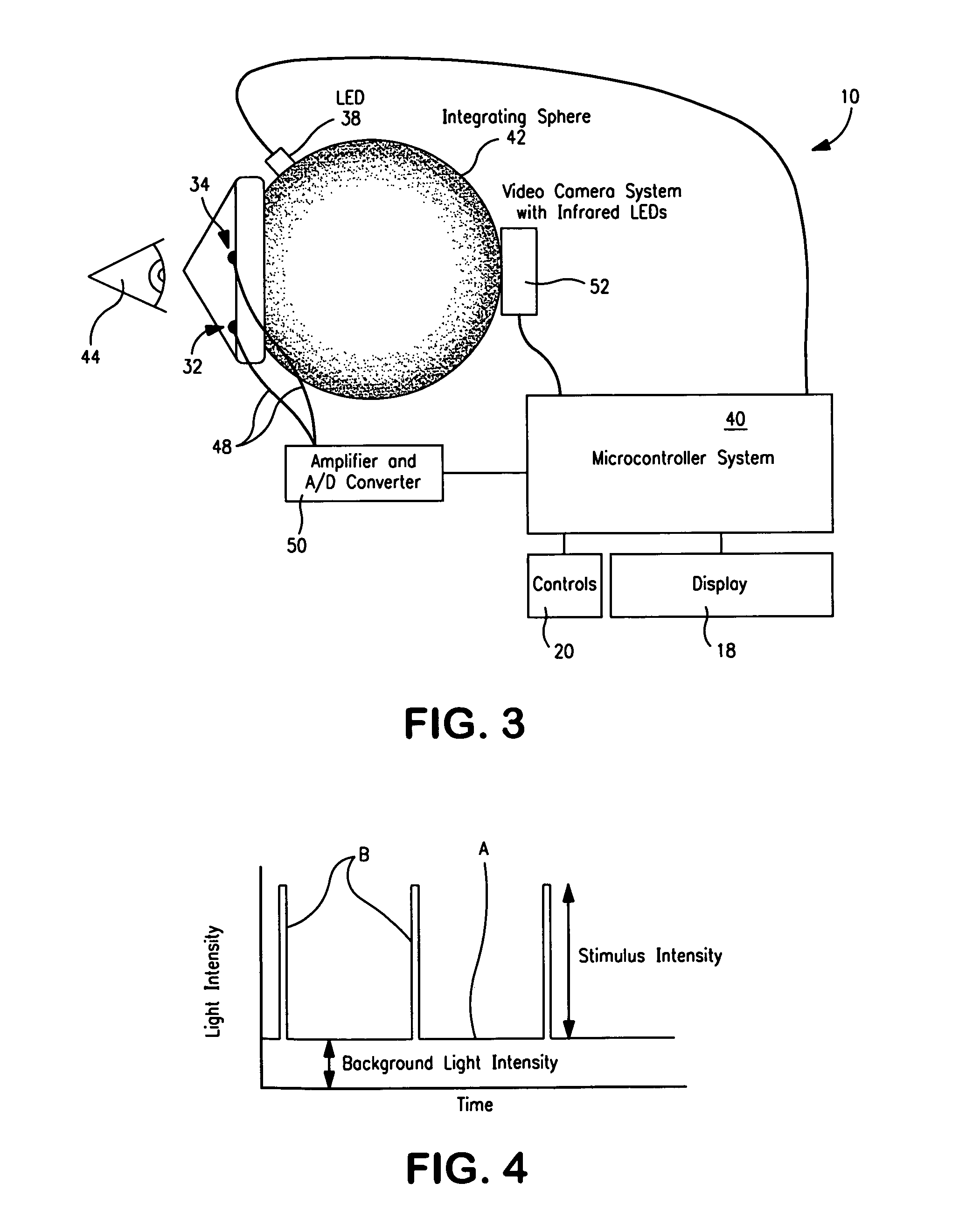Device to monitor retinal ischemia
a retinal ischemia and hand-held technology, applied in medical science, diagnostics, catheters, etc., can solve problems such as ischemia of the retina, affecting the normal functioning of the eye, so as to achieve the effect of improving the function of the eye, and reducing the risk of ischemia
- Summary
- Abstract
- Description
- Claims
- Application Information
AI Technical Summary
Benefits of technology
Problems solved by technology
Method used
Image
Examples
Embodiment Construction
[0024]Referring now to FIG. 1, there is shown a hand held retinal ischemia monitoring device 10 of the present invention. As can be seen, the monitoring device 10 comprises a hand held portion 12 with an electrode holder 14 at its forward end that has electrodes (not shown in FIG. 1) that are adapted to be placed in contact with the skin of the patient proximate to either eye of the patient when the monitoring device 10 is in its operative position. As will be seen, the electrode holder 14 is preferably rotatably mounted to the hand held portion 12. The monitoring device 10 can have a battery compartment 16 to house the batteries to power its operation. In addition, there is a readout 18, as well as various controls 20, the use of which will be later explained.
[0025]Turning now to FIG. 2, there is shown a perspective view of the electrode holder 14 of the present device. In the exemplary embodiment, the electrode holder 14 has a centrally located opening 22 and there are three elect...
PUM
 Login to View More
Login to View More Abstract
Description
Claims
Application Information
 Login to View More
Login to View More - R&D
- Intellectual Property
- Life Sciences
- Materials
- Tech Scout
- Unparalleled Data Quality
- Higher Quality Content
- 60% Fewer Hallucinations
Browse by: Latest US Patents, China's latest patents, Technical Efficacy Thesaurus, Application Domain, Technology Topic, Popular Technical Reports.
© 2025 PatSnap. All rights reserved.Legal|Privacy policy|Modern Slavery Act Transparency Statement|Sitemap|About US| Contact US: help@patsnap.com



